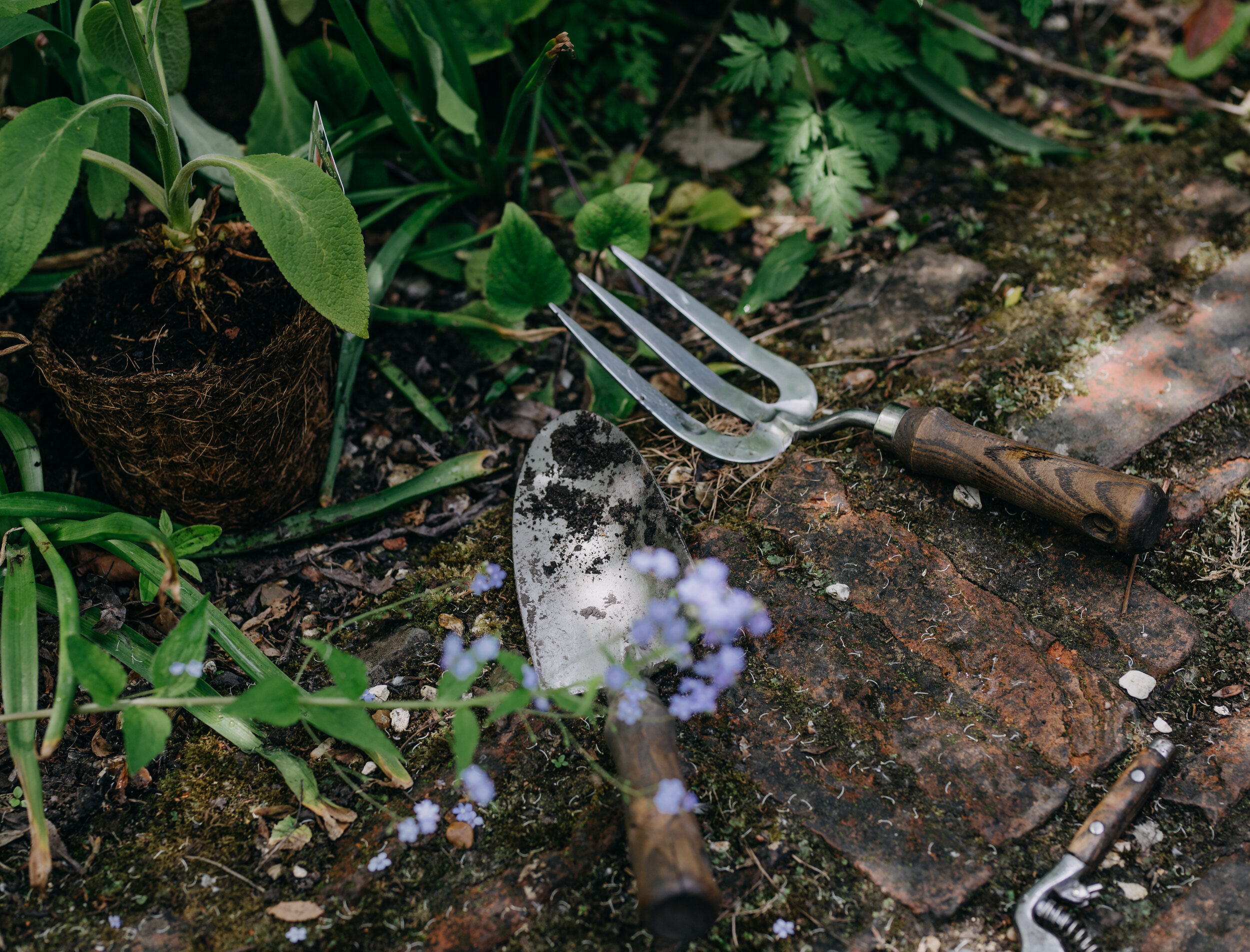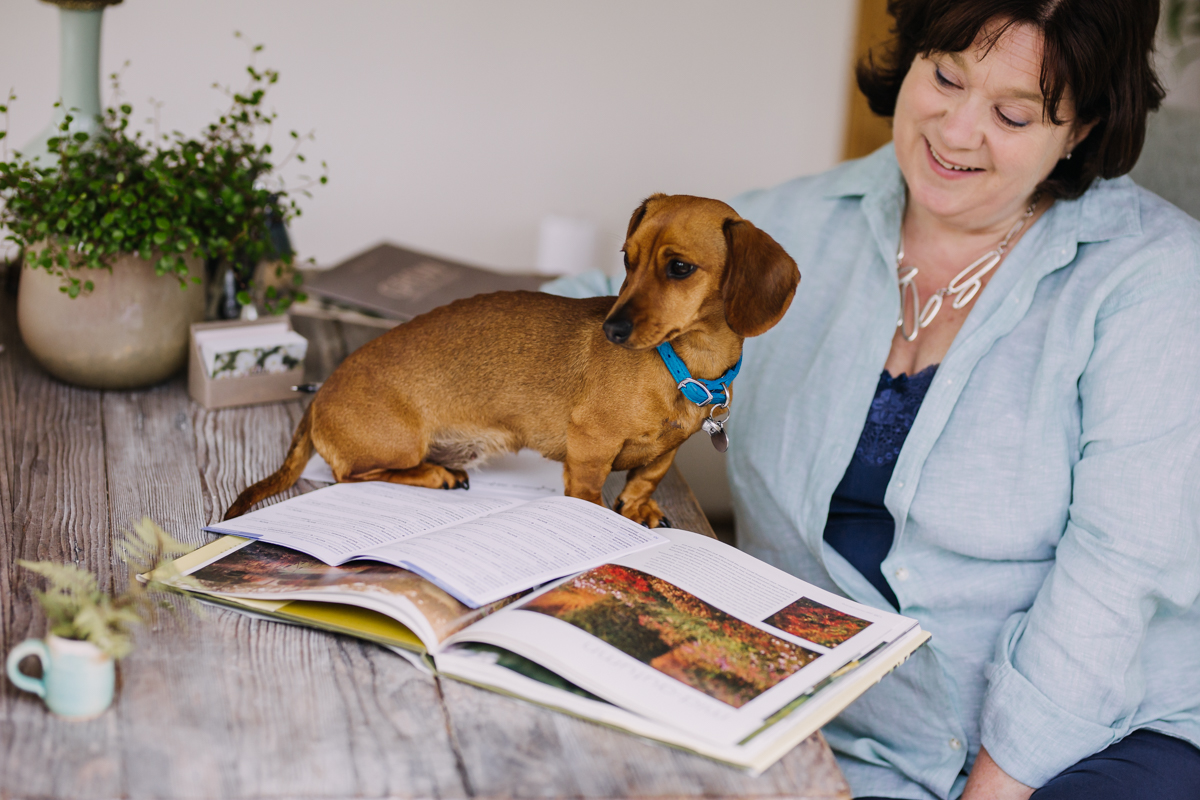
Max and Cynthia Felstead have a walled courtyard garden in Shillingford that needed some help. Having lived there for quite some time they felt that the existing planting was over-grown and dense, creating a really dark atmosphere. They wanted a garden they could enjoy and, when Cynthia and I got talking on an organised walk one day, it seemed that I could probably help.
The difficulty was that they had different ideas about the sort of planting that should replace what had, by now, gone and were finding it hard to reach agreement. They needed help to not only decide what plants to use but to find some common ground for the style.
“Sarah suggested small but very effective adjustments - she is happy to work with what is already there when appropriate”
what we did..
It was a case of clear, clarify and consolidate. We cleared anything that didn’t need to be there, clarified the layout by re-establishing the edges of beds that had got lost, for instance, and consolidated it all by creating a planting scheme that pulled the space together.
We began by capturing a list of all the jobs that needed to be done, dividing it into tasks and deciding how the jobs would be accomplished. Heavy or skilled jobs were passed to a skilled landscaper I recommended and this was obviously a great relief for my clients who visibly relaxed at this point.
We replaced a misshapen plum tree which was producing very little fruit. An important feature such as this, in a garden this size, should be gorgeous in at least three seasons not ugly in four so a new, healthy tree which would offer much more pleasure was chosen; a Snowy Mespilus (the latin name is Amelanchier lamarkii).
This small tree has pretty pink edged new foliage, flowers in spring, berries in summer and then autumn colour - so much value in such a small space, and so pretty in itself, that Max and Cynthia were delighted as soon as it was planted.
I often find myself giving permission somehow for clients to remove a tree or other plant they don’t love but are tolerating and, for me, it was really a no-brainer.
So many of us agonise over getting rid of plants and yet I am so clear it’s easy for me to help them decide - it’s the Marie Kondo principle in action - if it doesn’t spark joy in you, thank it for its contribution and let it go.
Walled garden in Shillingford - Before - we’ve marked out with blue paint the shape changes needed to create a more pleasing layout.
First stages of new planting design - the circles are to scale and represent one plant at 3 years old.
designing the planting - finding the common ground
Once the bones of the garden were sorted we discussed the planting and the first thing to do was to find some common ground for Cynthia and Max. He likes a tidy garden and she likes lots of loose planting. It was tricky but the promise of topiaried balls balancing softer planting, and the inclusion of Verbena bonariensis - a plant Max loves, solved the dilemma.
The garden measures 10 metres square, give or take, and the criteria was that the new plants should be reasonably easy to maintain, offer interest throughout the year and not be ‘too messy.’ Good structure was crucial as the house is accessed year round through this, rear, garden.
There’s plenty to think about when choosing plants. Obviously the style of garden and taste of the owners needs to be taken into consideration but it’s much more than that. We need to also consider the local climate, aspect of the garden - is it shady or sunny, hot or cold and what type of soil we’re working with.
Starting with a to-scale plan of the borders we choose plants to create a community, each one represented on the plan by drawing a circle scaled to the space it can be expected to occupy at three years old.
A metre circle represents a shrub for instance and a 30cm one defines a small perennial at a scale of 1:50. The design is built up gradually and in layers, starting with the plants which will offer the key structure.
the plants we chose
The planting scheme has a mix of strong long-lasting elements to offer interest year round, as well as lots of seasonal perennial choices to give a regularly changing picture.
We didn’t focus on the flowers in the first instance. Although flowers are what we often associate with gardens it is actually the foliage texture and form that has longevity of interest and gives a space its character and structure, much like a skeleton. If we focus on the flowers then impact is short lived.
Yew balls are positioned regularly along the main path and at the corners of the beds to create structure and offer repetition and create a sense of calm. In the past I’d have used box but the current box moth and blight issues preclude this. Yew is slow growing and expensive so we chose small ones that will bulk up over time.
The lovely mediterranean Spurge (Euphorbia charachias ‘Wulfenii’ offers impact while the delicate Golden Oats grass (Stipa gigantea) adds movement and texture. The hardy blue-flowered Leadwort (Ceratostigma plumbaginoides) offers late season interest with its sweet red-edged leaves and vivid blue flowers and Geranium ‘Rozanne’ covers the ground well.
Crazy purple daisy Coneflower (Echinacea purpurea ‘Rubenstein’) is a delicious addition and the little central cone seedheads, that come after flowering, associate so well with the grasses. It’s always useful to consider seed-heads in a scheme too as they extend the season of interest and birds love them.
Oh, and Verbena bonariensis stands tall and is see-through adding lovely interest. In fact, it was the mention of verbena that sealed the deal when we were discussing the planting - Max loves it and it is unstructured enough to satisfy Cynthia too - a real win win.
Echinacea ‘Magnus” (coneflower) and Verbena bonarienesis
planting day
Cynthia and Max asked me to supply the plants which I was happy to do as it enables me to ensure that the varieties I have chosen for their particular characteristics are the ones that are supplied and I was happy to be there when the 300 or so perennials, shrubs and yew balls arrived to count them in.
There is always a wonderful change in atmosphere once the plants are in the garden, even before they are in the ground,, and this was no exception. We couldn’t wait to get them settled in their new homes.
Planting took place on a sunny day in late April 2018 and, Sarah, a gardener colleague, came to help Max and Cynthia plant whilst I ‘laid out’, starting with the larger shrubs, yew balls and perennials, moving onto ground cover and filling in with lots of lovelies that add the interest change throughout the year.
follow up visits…
Since developing the garden Cynthia, Max and I have met seaonsally to discuss general care, the addition of bulbs to extend the planting and more, and I am delighted to witness bow Cynthia and Max’s enjoyment and ownership of the garden has grown through the process.
On my most recent visit our discussion was all about how best to move forward with their front garden (which they had been busy clearing) and I’m off there again later this month (July 2019) to sit with them both at the kitchen table and plan the planting - I can’t wait to see what more they have achieved since my last visit. They’ve definitely got a sense of ownership and pleasure in their new garden!
The plants were chosen to give interest over the longest possible time and for contrast of texture, form and colour. Here you see Euphorbia characias, Geranium ‘Roxanne’, the leaves of Acer palmatum and Persicaria ‘Taurus’.
“Sarah designed and transformed a small, uninteresting garden into an inspirational outdoor space. We worked closely together to create a garden that perfectly met our brief and complements our home.”
















